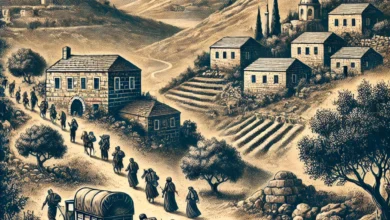“Like the Kurdish Bag”: The Story Behind the Proverb in Jabal Amel

In Jabal Amel, the saying “Like the Kurdish bag” is used to describe someone or something that holds a mix of unrelated or contradictory items, or a person struggling with conflicting behaviors or decisions.
When asked about the origins and implications of this saying, historian Kassem Hejeij explained:
“In the past, a Kurdish man lived in the region and was well-loved for his honesty and integrity. He was also a skilled craftsman, traveling between villages to repair almost everything—doors, windows, farming tools, and household items.
He was known for his bag, a goatskin pouch he carried everywhere. This bag contained his tools and a collection of discarded items he picked up from the homes he visited. Over time, the bag became a symbol of diversity and randomness, giving rise to the proverb.”
Cultural and Historical Context
Hejeij added:
“All such bags were made from goat or cow leather, but their names varied based on their uses:
Ziq: A leather pouch used for storing wine.
Siqa’ or Qirba (waterskin): A pouch used for storing water.
Darf or Zarf: A leather container for milk or yogurt.
Interestingly, a Syrian newspaper from the 1940s and 1950s, distributed in Lebanon, was also named ‘The Kurdish Bag.’ Owned by Mr. Tawfiq Janna, it was given this name because it included a wide variety of topics: humor, politics, social events, and arts and entertainment news.”



